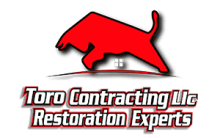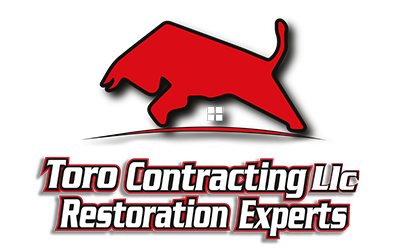Imagine standing outside your home during a heavy rainstorm, watching as water cascades down your roof edge. Suddenly, you notice that the gutters are overflowing or leaking, threatening to damage your foundation. This scenario is all too familiar for homeowners who haven’t given much thought to their gutter system. When it comes to protecting your home, choosing the right gutters is crucial, and that’s where the debate between seamless gutters vs. traditional gutters comes into play.
In this article, we’ll dive deep into the differences between seamless gutters and traditional gutters, helping you understand the pros and cons of each option. Whether you’re building a new home or considering an upgrade, making the right choice can save you money, improve your home’s curb appeal, and prevent costly water damage. By the end of this blog, you’ll have a clear idea of which gutter system best suits your home’s needs, climate, and budget. Let’s explore how seamless gutters differ from traditional gutters and what factors to consider before making your decision.
Key Takeaways
Leak Prevention: Seamless gutters are custom-fabricated on-site, minimizing joints and reducing leak points compared to traditional sectional gutters.
Maintenance: Fewer seams mean less debris buildup and fewer repairs over time, making seamless gutters more low-maintenance.
Aesthetics & Fit: Seamless gutters offer a sleek, continuous appearance perfectly tailored to your roofline, enhancing curb appeal.
Durability & Longevity: Made from a single continuous piece of metal, seamless gutters typically outlast traditional gutters, often lasting 30+ years with proper care.
Cost vs. Value: Though seamless gutters have higher upfront costs (due to custom fabrication and professional installation), they deliver long-term savings through reduced maintenance and repair expenses.
Why Choosing Between Seamless Gutters and Traditional Gutters Matters for Your Home
When it comes to protecting your home from water damage, gutters are an unsung hero. They play an essential role in directing rainwater away from your roof, walls, and foundation. But not all gutters are created equal. The decision between seamless gutters and traditional gutters can significantly impact your home’s durability, maintenance needs, and overall value.
What Are Seamless Gutters and Traditional Gutters?
Traditional gutters typically come in standard lengths, usually 10 or 20 feet, that are cut and assembled on-site. This means multiple joints and seams need to be connected using sealants or screws. Those joints can often be points of weakness where leaks or clogs develop over time.
Seamless gutters, on the other hand, are custom-made to fit your home’s dimensions precisely. Fabricated using a machine that extrudes a continuous piece of metal, they generally have no seams except at corners and downspouts. This design drastically reduces the risk of leaks.
Why Does This Choice Matter?
The importance of choosing the right gutter system cannot be overstated. According to the National Association of Home Builders, water intrusion is one of the most common causes of structural damage in residential properties. Faulty or inefficient gutters contribute heavily to this problem by allowing water to seep into the foundation, causing cracks, mold, or erosion.
A well-designed gutter system ensures that rainwater flows efficiently, safeguarding your home from costly repairs. Choosing seamless gutters over traditional ones can mean fewer maintenance headaches, less likelihood of water damage, and improved curb appeal.
Backed by Data
Research shows that homes with seamless gutters experience up to 40% fewer repairs related to water damage than those with traditional gutters. In fact, a study conducted by the American Society of Home Inspectors found that clogged seams and leaking joints in traditional gutters accounted for the majority of water damage claims.
Moreover, seamless gutters generally last longer, up to 30 years or more, compared to the typical 15-20 years lifespan of traditional gutter systems. This longevity can translate into better long-term savings for homeowners.
A Real-Life Success Story
Consider the experience of the Thompson family from Seattle. After battling recurring foundation cracks and mold issues, they decided to replace their old traditional gutters with seamless aluminum gutters. Within a year, they noticed a dramatic reduction in water pooling around their foundation and no subsequent leaks in the gutters.
The Thompsons saved thousands in foundation repairs and increased their home’s resale value thanks to this switch. Their experience underscores how critical the right gutter choice is for long-term home protection.
In the next sections, we’ll dive deeper into the pros and cons of seamless and traditional gutters, helping you decide which system truly fits your home’s unique needs. But understanding the context and benefits first sets the foundation for making an informed, smart choice. After all, when it comes to your home’s health, every drop counts.
How to Choose Between Seamless Gutters and Traditional Gutters Step by Step
Selecting the right gutters for your home is more than just a choice, it’s a decision that impacts your house’s protection, maintenance, and aesthetics for years to come. When faced with the decision of Seamless Gutters vs. Traditional Gutters, it’s essential to analyze your needs carefully. Here’s a clear, step-by-step guide to help you navigate this choice and pick the perfect gutter system.
Step 1: Assess Your Home’s Architecture and Size
The style and size of your home influence gutter choices significantly.
– Check Roofline Complexity: Homes with multiple roof angles or bends often benefit from seamless gutters, as they can be custom-fitted without many joints.
– Measure Eaves Length: Longer stretches of straight roofline can be well-served by either option, but seamless gutters reduce joint count.
– Consider Home Style: Traditional gutters sometimes complement historic or classic homes due to aesthetic familiarity.
Example: A sprawling ranch-style home with a straightforward roofline might do well with traditional gutters, while a colonial with complex roof structures could find seamless gutters more effective.
Step 2: Understand Installation Differences
Installation quality directly affects gutter performance.
– Seamless Gutter Installation:
– Fabricated on-site to precise measurements.
– Requires professional equipment.
– Typically faster to install since fewer joints mean less time sealing.
– Traditional Gutter Installation:
– Comes in pre-cut sections.
– Can be DIY-friendly for smaller projects.
– Joints and seams are common and need proper sealing to prevent leaks.
Pro Tip: Even though seamless gutters usually demand professional handling, this investment often pays off with better durability.
Step 3: Compare Material Options and Durability
Both gutter types come in various materials. Understanding how materials interact with the gutter type is key.
– Seamless Gutters Materials:
– Aluminum (most common)
– Copper (high-end, visually appealing)
– Steel (robust but prone to rust if not maintained)
– Traditional Gutters Materials:
– Aluminum sheets pieced together
– Vinyl (budget-friendly but less sturdy)
– Galvanized steel (stronger but heavier)
Durability Tip: Seamless gutters, typically aluminum, tend to last longer since fewer joints mean less vulnerable spots for corrosion or leaks.
Step 4: Evaluate Maintenance Requirements
Maintenance frequency and difficulty may vary.
– Seamless Gutters:
– Fewer joints mean less debris accumulation and fewer leaks.
– Usually easier to clean due to smooth interior surfaces.
– Less likely to require patching over time.
– Traditional Gutters:
– More joints can trap leaves and debris.
– Seals may need regular inspection and resealing.
– More prone to leaks over extended periods.
Maintenance Insight: If you prefer low-maintenance, seamless gutters typically reduce headaches related to cleaning and repairs.
Step 5: Factor in Cost and Budget
Cost considerations often guide final decision-making.
– Upfront Costs:
– Seamless gutters generally cost more initially due to custom fabrication and professional installation.
– Traditional gutters tend to be more affordable upfront.
– Long-term Value:
– Seamless gutters may save money over time through durability and reduced maintenance.
– Traditional gutters might incur additional costs over their lifespan for repairs and upkeep.
Step 6: Visualize the Aesthetic Impact
Your gutters play a role in curb appeal.
– Seamless Gutters:
– Offer a sleek, continuous look, blending seamlessly with your fascia.
– Custom colors available for better matching.
– Traditional Gutters:
– Visible joints can break the flow and may appear more utilitarian.
Step 7: Seek Professional Advice and Quotes
Finally, consult with experienced gutter installers.
– Request detailed quotes for both gutter types.
– Ask about product warranties and installation guarantees.
– Consider contractor experience with both seamless and traditional gutters.
Following these seven steps will empower you to choose confidently between seamless gutters vs. traditional gutters based on your home’s specific needs, budget, and style preferences. Remember, the right gutter system will protect your home from water damage while adding value and charm for years to come.
Tips for Choosing Between Seamless Gutters vs. Traditional Gutters for Your Home:
✅ Consider Maintenance: Seamless gutters reduce leaks and clogs thanks to fewer joints, making upkeep easier and less frequent.
❌ Avoid Frequent Repairs: Traditional gutters with many seams often need patching and can create more potential leak points.
💡 Long-Term Investment: Seamless gutters might have a higher upfront cost but typically offer greater durability and lifespan.
✅ Custom Fit Matters: Seamless gutters are custom-made on-site to perfectly fit your home’s dimensions, ensuring optimal water flow.
❌ Watch for Installation Quality: Poorly installed seamless gutters can cause drainage issues; always hire experienced professionals.
💡 Material Choices: Both types come in aluminum, steel, and vinyl, but seamless gutters often provide a sleeker look and better corrosion resistance.
✅ Aesthetic Appeal: Seamless gutters provide a modern, uniform appearance that can boost your home’s curb appeal.
❌ Budget Considerations: Traditional gutters are generally less expensive initially but may lead to higher maintenance costs over time.
💡 Seasonal Performance: Seamless gutters handle heavy rain and snow better due to their continuous design, reducing overflow risks.
✅ Match Your Climate: For areas with extreme weather, seamless gutters offer superior protection against damage and leaks.
💡 Check Local Codes: Some regions have specific gutter requirements; ensure your choice aligns with local building codes and regulations.
❌ Don’t Ignore Clogs: Regardless of type, install gutter guards to minimize debris buildup and prevent water damage.
By weighing these factors, you can decide whether seamless or traditional gutters best fit your home’s needs, budget, and style preferences.
Key Concepts
Understanding the difference between seamless gutters and traditional gutters requires delving into the fundamental concepts that define each system. At its core, a gutter serves as the home’s guardian against water damage, akin to an invisible shield that diverts rainwater away from the foundation, walls, and landscaping. However, the way this shield is constructed and installed influences performance, durability, and overall aesthetics. Let’s explore these essential concepts to unravel the subtle yet impactful distinctions between seamless and traditional gutters.

The Anatomy of Gutters: Pieces vs. Continuity
Imagine your home’s gutter system as a river that captures water runoff from your roof. Traditional gutters resemble a segmented river, assembled from multiple pieces joined together at intervals. Each segment is typically 10 to 20 feet long, connected by seams and corners that act like tiny dams or weak spots along the water’s path. These joints can be compared to the links in a chain, offering structure but also potential points of failure.
On the other hand, seamless gutters are more like an unbroken stream, fabricated from a single continuous piece of metal custom-cut to the length of your home’s roofline. This lack of seams dramatically alters the system’s efficiency. Where traditional gutters may leak at connections, seamless gutters glide water smoothly to downspouts without interruption, much like a well-oiled machine in motion.
Material and Manufacturing: Flexibility Meets Precision
Traditional gutters have the advantage of being widely available and easy to install, typically manufactured from pre-cut sections of materials such as aluminum, vinyl, or steel. This segmented nature means repairs or replacements can be localized but also introduces variability in quality at each joint.
Seamless gutters are usually crafted on-site from an aluminum coil, shaped by a machine that extrudes a sleek, precise channel tailored to exact measurements. This on-demand fabrication resembles a bespoke garment, made to fit perfectly rather than off-the-rack options. The precision manufacturing reduces the chances of warping, corrosion, or misalignment, common problems with piecemeal gutter segments.
Leak Points: The Achilles’ Heel
Seams in traditional gutters function much like sutures holding together a wound, they’re necessary, but inherently vulnerable. Over time, exposure to weather elements causes the sealants around these seams to deteriorate, creating tiny fissures that evolve into leaks. This phenomenon can be likened to cracks in a dam: even the smallest breach can compromise the structure’s integrity.
Conversely, seamless gutters minimize these vulnerable points, offering a continuous channel through which water flows unhindered. The absence of joins significantly lowers the risk of leaks, reducing maintenance and enhancing the long-term performance of the system. This continuous flow can be envisioned as a smooth highway, free of potholes or intersections, allowing uninterrupted movement.
Installation Complexity and Customization
Traditional gutters’ segmented design typically means simpler installation, as individual sections can be fitted and adjusted piece by piece. This modular approach provides some flexibility in customization but also increases the time and labor needed to ensure each joint is properly sealed and aligned.
Seamless gutters, in contrast, involve a more complex, technologically advanced installation process. The on-site fabrication requires specialized equipment and expertise to cut and shape gutters precisely. This customization finds a parallel in crafting a tailored suit, each inch measured and cut to perfection, offering a flush fit along your home’s profile that traditional seams cannot match.
Aesthetic and Functional Impact
From an aesthetic perspective, seamless gutters create a cleaner, more streamlined appearance, blending elegantly with modern architectural designs. The absence of visible seams contributes to a tidy, minimalist facade, much like the difference between a patchwork quilt and a single piece of fine fabric.
Functionally, the continuous design offers improved water flow and drainage efficiency. Seamless gutters reduce the potential for clogging that can occur at joints and corners, ensuring rainwater is swiftly directed away from the home’s structure. This effect is akin to the difference between a clogged artery and one that flows freely, healthier and better performing.
Longevity and Durability
The lifespan of gutters depends heavily on their construction and materials. Traditional gutter systems, with their multiple joints, often require more frequent maintenance and face greater risk of corrosion and structural compromise at connection points.
Seamless gutters’ uniform construction enhances durability. The continuous metal reduces stress points and reinforces resistance to environmental wear and tear. This durability is comparable to the difference between a patchwork bridge and a single-span bridge that can better withstand the forces exerted on it.
Cost Implications Without Oversimplification
While the cost is not the focus here, understanding the underlying reasons why seamless gutters often involve a higher initial investment is crucial. Much like purchasing a custom-crafted product versus an off-the-shelf item, the precision, technology, and labor involved justify the difference in price. The enhanced performance, reduced maintenance needs, and aesthetic benefits serve as the intangible dividends that come with this investment.
Grasping these concepts provides a comprehensive lens through which to evaluate seamless gutters versus traditional gutters. By conceptualizing gutters not merely as functional elements but as dynamic systems with nuanced characteristics, homeowners gain deeper insight into how each option aligns with their home’s needs and their personal priorities. In this way, the choice transcends mere preference, becoming a strategic decision rooted in understanding the essence of water management architecture.
Frequently Asked Questions about Seamless Gutters vs. Traditional Gutters
❓ What are seamless gutters?
Seamless gutters are custom-cut to the exact length of your home and installed without joints, reducing the chances of leaks and clogs. They are made from a continuous piece of material, typically aluminum.
❓ How do traditional gutters differ from seamless gutters?
Traditional gutters come in pre-cut sections that are joined together with seams and connectors, which can create weak points prone to leaks and require more maintenance compared to seamless gutters.
❓ Which gutters require less maintenance?
Seamless gutters generally require less maintenance because their continuous design minimizes leaks and reduces places where debris can accumulate, making them easier to keep clean.
❓ Are seamless gutters more expensive than traditional gutters?
Yes, seamless gutters typically cost more upfront due to custom manufacturing and professional installation. However, their durability and lower maintenance can lead to long-term savings.
❓ Which gutter type is best for my home?
If you prioritize durability and minimal maintenance, seamless gutters are usually the best choice. On the other hand, traditional gutters can be suitable for smaller budgets and simpler installations. Evaluating your home’s size, climate, and budget will help determine the best fit.






